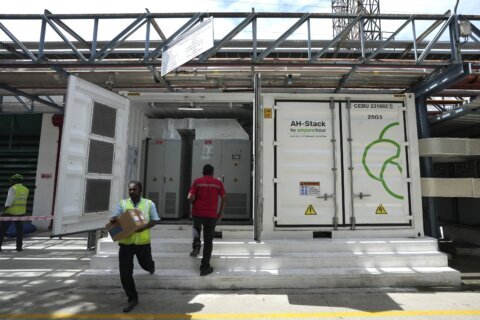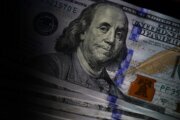Buy now, pay later, also known as BNPL, is a financial service that allows shoppers to break everyday purchases into smaller installments — and it often encourages consumers to spend money they don’t have or buy more items than they would have otherwise been able to afford, according to a new survey from U.S. News.
Between Feb. 14 and 22, 2023, U.S. News surveyed 1,201 consumers who have used buy now, pay later in the past 12 months. We asked respondents a series of questions to find out why they used BNPL and how it impacted their shopping decisions. Here’s what we found:
— Some shoppers use BNPL to buy luxury goods, while others use it to put food on the table. The most popular shopping categories among BNPL users are clothing/accessories (43%), electronics (43%), furniture (26%), appliances (23%) and groceries (22%). Additionally, 31% of respondents have used BNPL to buy a luxury item such as a designer handbag or watch, and slightly more than half (51%) have bought a gift for someone else using BNPL.
— Many consumers are using BNPL to buy items they couldn’t otherwise afford. Most respondents (53%) say they would not have purchased the items they bought if BNPL weren’t an option. More than a third (35%) used BNPL because they didn’t have enough money to buy an item outright. About a fifth of respondents say the priciest purchase they made with BNPL was under $100 — but about the same amount (18%) say their most expensive BNPL purchase was $500 or more.
— Those who use BNPL are likely to become repeat customers. About three-quarters (74%) used BNPL more than once in the past 12 months, with 15% using it five or more times during this period. Likewise, 73% of respondents plan on using BNPL again in the coming year. Nearly half (48%) are repaying the balance on multiple BNPL agreements.
— Not all BNPL users are satisfied with their decision. About one in five respondents (19%) regret using BNPL, with the primary reasons being that they were charged interest or fees (37%), they can’t afford their payments (34%) and it was difficult to return an item (30%). Of those who tried to return an item they bought using BNPL, 13% were unable to do so, and nearly a quarter (23%) were successfully able to make a return but also say the process was “difficult.”
— Nearly half of BNPL users struggled to make payments at some point. More than a third (37%) “sometimes” struggle with their BNPL payments, and about 10% struggle “often” or even “frequently.” Plus, enrolling in BNPL usually comes at an added cost: Most BNPL users paid financing charges in the form of interest (20%), fees (21%) or both (14%).
[Read: Best Personal Loans.]
22% of Respondents Used BNPL to Buy Groceries
Buy now, pay later can be used to break virtually any purchase into smaller payments, from laptops to couches. But in a worrying new trend in the face of surging inflation, many shoppers are using BNPL at the grocery store. More than a fifth (22%) of those who used BNPL in the past year have used the service to buy groceries.
The most popular spending categories are clothes and accessories (43%), such as shoes and purses, as well as electronics (43%), such as laptops and smartphones. Shoppers also used BNPL to purchase furniture (26%) and appliances (23%). Some consumers are also using BNPL on discretionary expenses such as travel (13%) and entertainment (11%).
Following the busy holiday season, more than half of respondents (51%) say they’ve used BNPL to buy a gift for someone else. Additionally, about a third (31%) say they have bought a luxury item, such as a designer handbag or watch, using BNPL.
BNPL Sways Shoppers to Buy Items They Couldn’t Otherwise Afford
When asked why they decided to use buy now, pay later, more than a third of respondents (35%) say that they didn’t have enough money to pay for the item in full upfront, and 16% bought more items than they would have otherwise. Still, some other popular reasons speak to the flexibility BNPL affords: 29% used the service because they didn’t have to pay interest, and 27% say it was cheaper than using a credit card or personal loan.
Of concern, most shoppers we surveyed (53%) say they wouldn’t have bought the items they financed if buy now, pay later weren’t an option. This suggests that many shoppers are using BNPL to stretch their budgets beyond what they can truly afford.
[Read: Best Debt Consolidation Loans.]
Those Who Use BNPL Are Likely to Use It Again
It’s clear that buy now, pay later has value for shoppers when you look at the number of consumers who use the service repeatedly. The vast majority of shoppers (74%) have used BNPL more than once in the past 12 months: 29% have used BNPL twice, 21% have used it three times, 9% have used it four times, and 15% have used it five or more times. Similarly, 73% of survey respondents plan on using BNPL again in the next year.
Most BNPL users are repaying multiple BNPL financing agreements. Of them, half are repaying the balance of two BNPL agreements, while 28% are repaying three, 15% are repaying four, and 8% are repaying five or more.
With a plethora of BNPL providers to choose from, some companies stand out from the rest. PayPal was the most commonly used BNPL provider, with 51% of respondents having used the app’s pay later feature, followed by Afterpay (43%), Affirm (36%) and Klarna (34%).
For Some Shoppers, BNPL Is an Expensive Regret
While most shoppers are generally satisfied with their decision to use buy now, pay later, that sentiment isn’t shared by everyone. About a fifth of shoppers regret using BNPL, primarily because they were charged interest or fees (37%). Most BNPL users pay to use this service in the form of interest (20%), fees (21%) or both (14%).
Another regret among BNPL users is that they can’t afford to make payments (34%). Although most shoppers who have used BNPL “never” struggle to afford their payments (53%), many experience hardship “sometimes” (37%), “often” (8%) or “frequently” (3%).
Another common drawback of BNPL is that it can complicate the process if shoppers want to make a return. Of those who regret using BNPL, 30% say it made it more challenging to return an item. Among all respondents, 31% tried to return an item they bought using BNPL. The majority of them were able to successfully return the item easily, but nearly a quarter (23%) say it was difficult to do so. Additionally, 13% were unable to return an item they bought using BNPL.
A highly advertised benefit of BNPL is that it doesn’t require a hard credit inquiry, meaning it won’t impact your credit score if you decide to use it. Most BNPL users (52%) say their credit score hasn’t been affected by using the service, and those who saw a change in their credit score report it was more positive (17%) than negative (11%). Still, about a quarter of those who regret using BNPL say that it negatively impacted their credit score.
Tips for Using BNPL Wisely
Just like any financial product, buy now, pay later isn’t inherently bad — it just depends on how you use it. With a proliferation of BNPL providers available on the market, many of which come with varying repayment rules and fees, it’s easier than ever to make an honest mistake while using BNPL. Here are a few tips for using BNPL responsibly:
— Take note of your payment schedule. When you enroll in BNPL, the provider will give you a payment schedule, sometimes with a choice of repayment plans. Enter the payment due dates on your calendar or set a reminder on your phone so you can make payments on time and avoid paying late fees. Also, be sure that you can afford the payment amount, as many BNPL providers will deduct the payment from your account using direct deposit.
— Don’t spend beyond your means. While it’s usually OK to buy a pricey item using BNPL, don’t spend more than you would otherwise just because you can. For example, BNPL can be tool for financing a new refrigerator without paying in full upfront, but you shouldn’t buy a more expensive fridge than you would if you had to buy one outright. And if you’re thinking about using BNPL for a discretionary purchase, such as a plane ticket or shoes, consider saving up in advance and paying in cash to avoid potential fees and interest charges.
— Understand how BNPL can impact your credit. BNPL usually requires a soft credit inquiry when you apply, which won’t impact your credit score. But if you fail to make payments on time, then the BNPL provider may report your account as delinquent to the credit bureaus. Recently, the three major bureaus — Equifax, Experian and TransUnion — have begun to accept credit reporting data from BNPL providers.
— Read the fine print. Before accepting a BNPL payment plan, be sure to read the financing agreement in full to understand what type of interest and fees you may incur. While most BNPL providers don’t charge interest, some may charge interest rates as high as 36%. You should also understand whether a BNPL company charges late fees, what those fees are and when they can be assessed.
— Compare all of your payment options. BNPL is just one method for breaking large purchases into smaller installments. You should also compare your alternatives such as credit cards and personal loans. Many store credit cards offer extended repayment plans, allowing you to pay over time without additional interest charges. For instance, you may be able to finance a new appliance in smaller monthly payments using a home improvement store card.
[Read: Best Low-Interest Personal Loans]
More from U.S. News
Services That Allow You to Buy Now, Pay Later
Can You Get a Personal Loan With No Credit Check?
Survey: Shoppers Use BNPL for New Tech, Clothes ? and Groceries originally appeared on usnews.com







